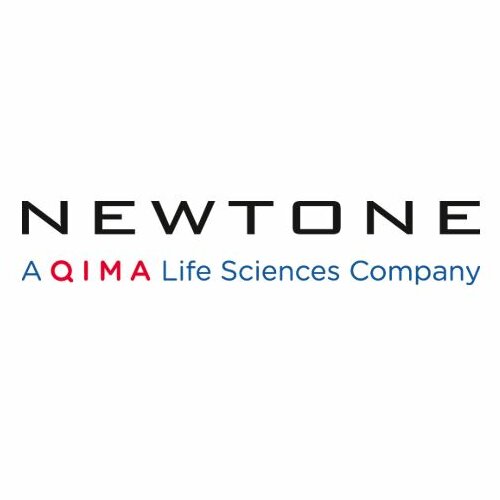Prove your product’s clinical efficacy through digital imaging analysis by Newtone Technologies via FOCUS #10
26 June 2024
About acne
Acne is among the 5 most frequent reasons for dermatological consultations, which is partly explained by the fact that it affects individuals of all demographics, albeit in varying degrees. This well-known skin condition causes lesions that appear with flare-ups. Non-inflammatory lesions include whiteheads (closed comedones) and blackheads (open comedones), while inflammatory lesions include nodules, papules, and pustules. Often, following an inflammatory episode, patients may also experience post-inflammatory lesions, which typically manifest as erythema, hyperpigmentation, or scarring.
Dermocosmetic products for acne treatment
Dermocosmetic products designed to treat acne aim to reduce the frequency and severity of both non-inflammatory and inflammatory lesions, minimize the appearance of post-inflammatory marks, and even prevent acne onset by targeting its underlying causes, like hyperseborrhea. Thus, the claims associated with these products cover a wide spectrum, including “seboregulatory,” “mattifying,” “astringent,” “oil control,” “non-comedogenic,” “soothing,” “anti-imperfections,” “spot correcting,” “irritation-reducing,” “anti-redness,” and “scar-reducing”.
 Demonstrating the clinical efficacy of dermocosmetic products can be challenging, particularly due to the inherent subjectivity of face-to-face volunteer evaluation in clinical settings. At Newtone Technologies (part of the QIMA Life Sciences group), our mission is to assist you in obtaining more precise, sensitive, and reliable data concerning your products’ performance, and we do so by providing advanced digital imaging analysis solutions. Moreover, we also help you boost your marketing efforts thanks to our smart illustrations.
Demonstrating the clinical efficacy of dermocosmetic products can be challenging, particularly due to the inherent subjectivity of face-to-face volunteer evaluation in clinical settings. At Newtone Technologies (part of the QIMA Life Sciences group), our mission is to assist you in obtaining more precise, sensitive, and reliable data concerning your products’ performance, and we do so by providing advanced digital imaging analysis solutions. Moreover, we also help you boost your marketing efforts thanks to our smart illustrations.
Image analysis services
As previously mentioned, hyperseborrhea, or increased sebum production, while not solely responsible, is a necessary condition for the development of acne, making it a key target for anti-acne products. Clinically, hyperseborrhea gives the skin a shiny or “glossy” appearance. The decrease in the gloss parameter can be monitored using our imaging acquisition devices and algorithms to prove seboregulatory effects.
Regarding acne lesions, both inflammatory and non-inflammatory, two main approaches exist for their assessment. The first approach involves the monitoring of individual lesions over time with smaller, specialized devices designed for direct analysis of specific areas including the Region of Interest (ROI). The second approach, more holistic, requires a full-face acquisition device to monitor all facial lesions collectively. In both cases, algorithms are tailored to detect the specific lesion type, which enhances the precision and reliability of the evaluation.
Due to the existing link between an imbalanced skin microbiota (dysbiosis) and the onset of acne, we have also developed solutions that allow for the quantification of specific bacterial species on acne-prone skin. Notably, we can study the modulation of the levels of C. acnes —a key acne-contributing bacterium— on the surface of the skin by analyzing porphyrins (one of its metabolites), employing UV acquisition technology.

Moreover, our offer also encompasses the analysis of all types of post-inflammatory lesions. We offer advanced evaluation of erythema and redness through the evaluation of blood vessel dilation. Thanks to specially designed image analysis treatments we are capable of generating hemoglobin maps based on cross-polarized image acquisition. We also provide detailed evaluation of hyperpigmentation, assessing multiple factors such as color, surface area, and roughness. Additionally, our offerings extend to the evaluation of the severity of lesions using well-established dermatological scales, like the PAHPI grading system. These assessments are conducted by our expert in-house dermatologists, ensuring accuracy and reliability.
Illustration services
Because clear and impactful communication of your results is just as crucial as proving efficacy, we offer illustration services to showcase before-and-aftereffects and thus demonstrate your product’s clinical efficacy. We do this by using an average face of the study as a “canvas” where the real effects observed on the skin are displayed and highlighted. Simply choose a volunteer (either the mean or best case), determine the specific time points you want to showcase, and we will project their skin onto the avatar image!
If you have collected biophysical data (like readings from a sebumeter) showing how effective your product is, we are here to help you share those outcomes too. What we will do is craft a digital continuous color map from your biophysical measurements (either the mean case, best case, or the average study result), and make your results stand out.

CONTACT






 Follow us on Linkedin!
Follow us on Linkedin!
You must be logged in to post a comment.